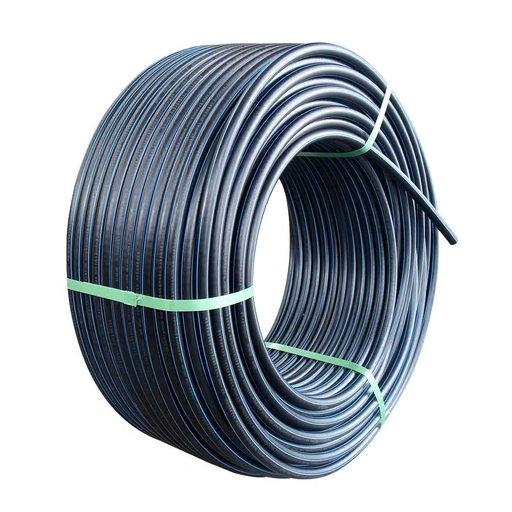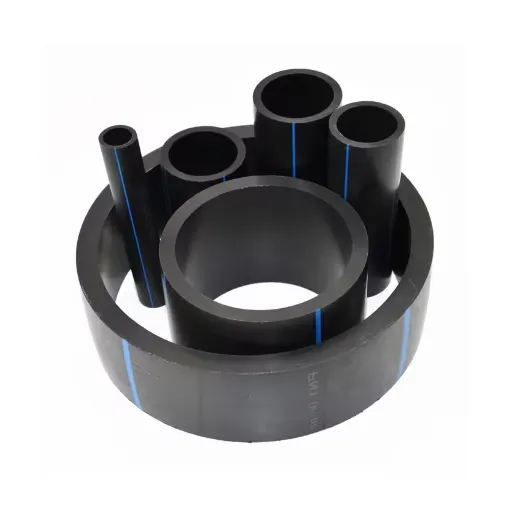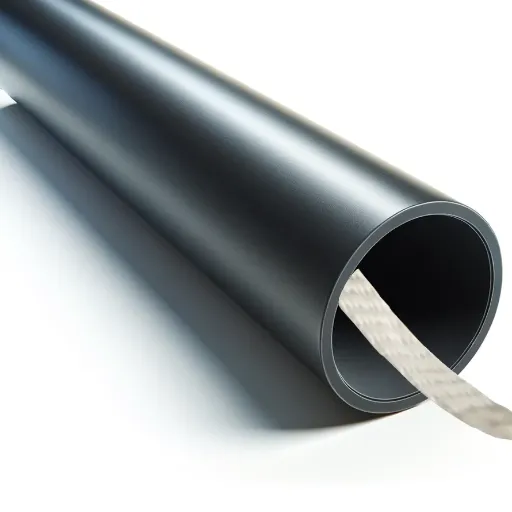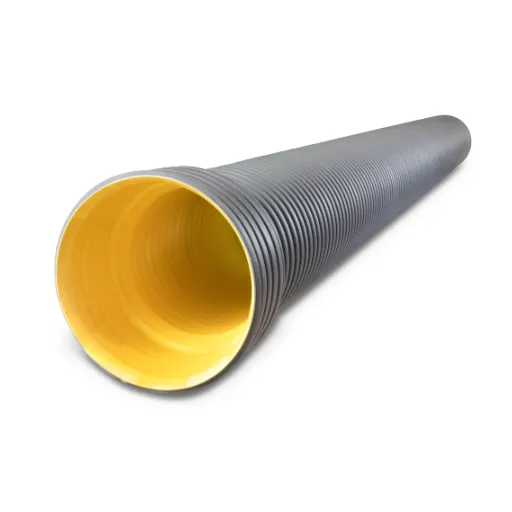High-density polyethylene (HDPE) pipes have revolutionized modern infrastructure with their durability, flexibility, and resistance to corrosion. However, selecting the right HDPE pipe fittings for specific applications can be a complex process due to the wide variety of types and functions available. Whether you are dealing with industrial systems, water supply networks, or drainage solutions, understanding the different types of HDPE pipe fittings and their unique applications is crucial for ensuring efficient and long-lasting performance. This guide is designed to provide you with a detailed overview of the various HDPE pipe fittings, helping you make informed decisions tailored to your project’s requirements. From socket fusion to electrofusion fittings, we’ll break down the essentials so you can approach your next installation or maintenance task with confidence.
How Do I Choose the Right HDPE Pipe Type for My Specific Application?
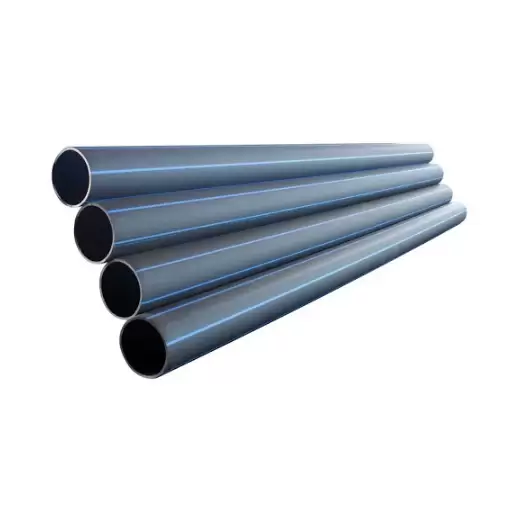
HDPE Pipes for Water Supply and Distribution Systems
The employment of HDPE (High Density Polyethylene) pipes in the supply and distribution of water is increasing due to the pipes` flexibility, affordability, and durability. Furthermore, these pipes are also suitable for potable water systems due to the lack of scaling, corrosion, and chemical breakdown. It also reduces equipment and labor costs due to low-weight construction, which simplifies transportation and installation.
The remarkable strength of HDPE pipes against external stresses and pressure surges is a distinct advantage, ensuring their longevity in demanding conditions. If installed correctly, the pipes can last over fifty years, which reduces maintenance costs from frequent replacements. Additional benefits include the various reconnection techniques such as socket fusion, butt fusion, and electrofusion which create seals that protect high-pressure systems from leaks.
To fulfill different operational requirements, HDPE pipes are provided with varying pressure ratings ranging from PN6 to PN25. Apart from having multi-purpose applicability, HDPE pipes are readily available in numerous dimensions, ranging from 20 mm to 1200 mm in diameter, thus ensuring usability in any system design. Furthermore, the internal diameter of the HDPE pipes is polished, therefore lowering the frictional losses and subsequently increasing the energy and hydraulic efficiency. These features make HDPE pipes cost-effective and eco-friendly, particularly for water distribution networks in severe climates or challenging terrains.
Gas Distribution and Industrial Applications of HDPE Pipes
Due to their superior performance under extreme conditions, High-Density Polyethylene (HDPE) pipes are widely used in gas distribution systems. These pipes are exceptionally strong while being flexible, which allows them to withstand ground movement or thermal expansion. In addition, the corrosion, chemical, and UV resistance of HDPE pipes makes them an ideal option for long-distance natural gas and industrial gas transport, as they require less maintenance.
The ability of HDPE pipes to operate under high-pressure gas distribution adds to their durability, withstanding operations and seamless fusion welding. This welding technique creates leak-proof joints, which improves operational safety by minimizing gas leaks, which is crucial in strict industry safety standards. In addition, the lightweight feature of HDPE pipes makes them cheaper and easier to transport and install, leading to cost savings in large-scale industrial projects.
In industrial processes, HDPE pipes are applied for the movement of abrasive slurries, chemicals, and even in compressed air systems. They serve enduring purposes because of high flows of temperatures, unforgiving industrial chemicals, and internal scaling, which improves the efficiency of flow. Furthermore, the versatility of these pipes and their use in both above-ground and underground applications make them particularly useful for modern gas pipes and industrial system frameworks.
Selecting HDPE Pipes for Drainage and Irrigation Solutions
High-Density Polyethylene (HDPE) pipes are becoming increasingly more popular for water drainage and irrigation works, owing largely to their superior performance characteristics. Their lightweight features, coupled with significant resistance to corrosion and chemicals, make them extremely durable and reliable in demanding efficiency environments. Due to their flexibility and ability to withstand variable pressures, these pipes are particularly well-suited for the transportation of water in agricultural fields.
As for drainage systems, HDPE pipes can manage increased volumes of runoff because of their smooth inner surfaces, which enhance flow rates and further reduce friction. Their resistance to biological and chemical blockages, as well as the structural degradation, ensures the pipes operate stably for long periods, in contrast with most other materials. The incorporation of new advanced manufacturing technologies has further improved their structural integrity by allowing the pipes to endure high loads if they are buried underground, as well as extreme temperature changes.
The need to repair or maintain irrigation systems utilizing HDPE pipes is significantly reduced, assisting in conserving water, as their leak-proof joints help improve the overall efficiency of the system. This adds to the intrinsic merits of the system as the inherent UV robustness of HDPE material ensures durability when exposed to sunlight for prolonged periods of time. Innovative modern multi-layer pipe designs have greatly boosted their adaptability in outdoor applications, enabling advanced integration with drip or sprinkler irrigation systems and offering greater versatility.
Choosing HDPE pipes for drainage and irrigation purposes requires consideration of specifications like diameters, pressure ratings, and the conditions at the installation site, which greatly impact performance. Understanding these factors properly demonstrates the intricate subtleties of a project, strengthening the importance of HDPE piping concerning modern-day infrastructural advancements.
What Are the Benefits of Different HDPE Pipe Types Compared to Other Materials?
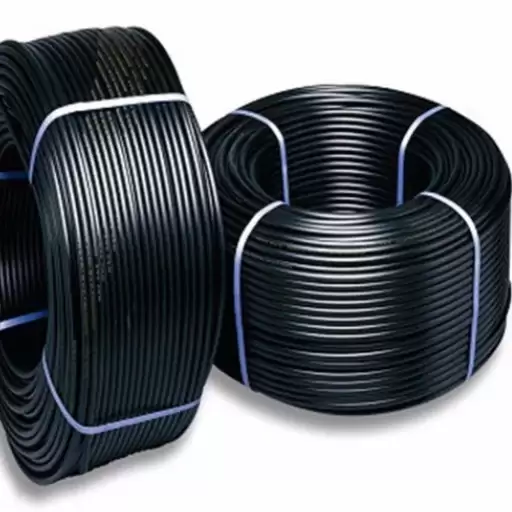
Durability and Corrosion-Resistance of High-Density Polyethylene Pipes
HDPE pipes have been manufactured to have incredible durability which is why they are used in various industries. These pipes have resisitance to physical harm such as impacts and external stress because of their flexibility and high tensile strength. In contrast with traditional materials like concrete or steel, HDPE is not susceptible to corrosion from chemicals, moisture, or UV rays, making it viable in different environments for a long time.
One striking feature of HDPE pipes is its resistance to internal and external cracking from chemicals. For example, when used in places with harsh industrial chemicals or sewage, HDPE is able to retain its structure which drastically reduces maintenance and operational costs. Also, research suggest that under ideal conditions, HDPE pipes are able to withstand over 50 years of usage, besting other alternatives like metal and PVC.
Moreover, additional durability is provided by the thermal fusion that HDPE undergoes, making it seamless and leak-proof, which adequately reduces contamination and water loss. These properties make HDPE pipes necessary in the transport of potable water, wastewater management, gas distribution, and other critical areas. Their top-of-the-line resistance to flexibility and corrosion also guarantees reliable performance even in difficult installations such as seismic zones or sub-terrain, which reinforces HDPE’s status as a future adaptable solution.
Cost-Effectiveness and Lifecycle Analysis of HDPE Pipe Systems
The economic advantages related to the use of HDPE pipes rest on the combination of relatively low initial costs and exceptional HDPE longevity. Pipes made from HDPE are designed to last over 50 years under normal working conditions; this reduces expensive replacements and maintenance activities, which tend to be frequent with other types of pipes. Their light-weight design also helps in lowering the cost of transportation and installation. Less specialized equipment, as compared to steel or concrete, is needed to lift and put the pipes into place, so dealing with the materials becomes easier. Moreover, HDPE pipes also offer greater flexibility, so joints and fittings are not needed, thereby lowering installation costs in terms of material and labor.
In terms of a lifecycle perspective, HDPE pipes have better resistance to chemical and environmental factors, meaning they do not deteriorate much with age. Unlike other piping materials that corrode, scale, or break down chemically, HDPE’s polymer structure is very robust and makes it suitable for many applications where durability and reliability are essential. Taking into account the savings made on expenses concerning operations, maintenance, and friendliness to the environment, systems using HDPE materials usually offer the best value when compared with other materials.
Analysis considering the Lifecycle of a product further adds to the argument of HDPE being a sustainable choice, alongside a lower energy consumption in production as opposed to metal-based systems. The recycling aspect improves the sustainability of the HDPE pipes. These pipes have a lower energy usage than the contemporary infrastructure transportation and manufacturing, and meet the modern environmental compliance goals. The benefits mentioned above mark an operational and financial value for the different municipal and industrial uses of the HDPE pipe systems.
How Are Different Types of HDPE Pipe Joined and Installed?
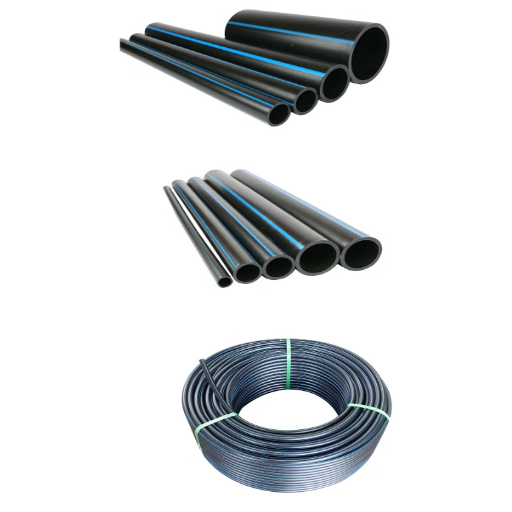
Butt Fusion and Electrofusion Methods for HDPE Pipe Connections
Due to its trustworthiness in creating leak-proof connections, butt fusion of HDPE pipes is one of the most commonly used techniques. With the use of a heating plate, the ends of the two pipes are brought to the optimal melting point. While keeping a very specific temperature, the surfaces are pressed together. When cooled, the molten pipes form a homogeneous joint. Butt HDPE fusion is the preferred method because it lacks the complexity of using external coupling materials and integrates additional joints as required. It is also more efficient, as they receive identical mechanical strength, firmness, and longevity with the pipe. This poses an issue if any imperfection is made regarding alignment or heating, where the joint suffers a detrimental loss in quality.
Electrofusion is another advanced technique used for joining HDPE pipes, especially where access to butt fusion machines is limited. Electrofusion uses specially designed fittings that contain wires that get hot when supplied power from an electrofusion processor. The heating effect causes the pipe and fitting materials to melt and bond together. This technique is best suited for joining pipes or making repairs in tight spaces, and it provides excellent long-term results. It has, however, very strict requirements of careful cleaning and scraping of the pipe surfaces to remove any possible contamination that would hinder fusion.
Both methods follow stringent requirements so that the integrity and quality of the joint will not be compromised. Most industry practitioners will look into the application and environmental factors to determine which method to use. For larger diameter pipelines in installation works, butt fusion is frequently the preferred choice, while electrofusion is most suitable for repair works or connections in confined spaces. Both methods, when appropriately applied, result in strong, corrosion-resistant joints that enhance the HDPE pipe systems’ reliability and durability.
HDPE Pipe Fittings and Their Compatibility with Various Pipe Types
HDPE Pipe Fittings is meant to operate with HDPE piping systems seamlessly and provide reliability in both performance and installation. Pipe fittings or HDPE Pipe fittings can be in the form of tees, elbows, couplings and reducers among others which are used in specific applications within the pipeline system. The system compatibility depends not only on the material but also the pipe’s diameter, wall thickness, and method of joining.
There is no problem with joining HDPE fittings with pipes through butt fusion, electrofusion or using mechanical connections as this provides a leak-proof system while maintaining structural integrity of the system. Most HDPE fittings are indeed designed to be used with PE pipes, but they can also be used with other materials through transitional fittings. These unique systems enable help in different systems to secure and efficient connectivity, accommodating hybrid infrastructure projects.
Additionally, new developments in HDPE fittings are made to endure different working conditions such as harsh temperatures, high pressure, and the flow of abrasive materials. They are commonly used in the water distribution and gas pipeline industries, as well as in industrial processes where durability and resistance to chemicals are crucial.
What Environmental Factors Affect HDPE Pipe Selection?
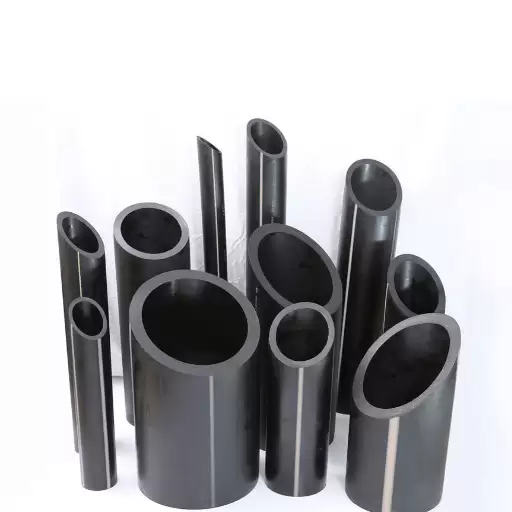
Temperature Impacts on Different Types of HDPE Pipe
The performance and service life of HDPE (High-Density Polyethylene) pipes are significantly impacted by temperature as it affects their HDPE structural integrity, durability, flexibility, and other facets. Thermal expansion of HDPE pipes is significantly greater than other materials, making them more susceptible to temperature changes. For example, at higher temperatures, the material’s tensile strength diminishes, resulting in lower pressure ratings than what would be expected at ambient conditions. On the other hand, while the impact resistance of HDPE pipes at low temperatures is well documented, extended periods of exposure to extreme cold tend to increase susceptibility to brittle fracture failures.
The specific grade of HDPE material used also determines its temperature tolerance. Also, operational policies dictate that engineers set derating factors in pressure ratings for extreme temperature scenarios which changes the expected performance of the pipe. Such actions optimize the safety margin for system reliability and performance throughout the pipeline’s lifespan.
When taking thermal effects into consideration, pipelines are equipped with devices like expansion loops or flexible joints that control the expansion and contraction of the system in order to relieve stress on the pipeline caused by temperature differences. These strategies enhance the durability of the HDPE pipe systems while conserving their functionality in varying conditions.
Chemical Resistance Properties of Various HDPE Pipe Types
The High-Density Polyethylene (HDPE) Pipe is known for its astounding chemical durability, which is critical in Agriculture, Industrial, and Waste Water Applications. The very structure of HDPE has a broad array of acids, organic solvents, and bases covered because of its molecular structure. A very good example is how HDPE pipes can withstand a lot of concentrated sulfuric acid. Moreover, they can withstand sodium hydroxide and other corrosive fluids, making them capable of transporting corrosive fluids without being damaged by them.
Adding other chemicals to a specific type of polymer can drastically change its chemical resistance attributes. Furthermore, PEX pipes are also known for withstanding corrosive substances, which makes them one of the best for chlorinated sites and high-purity water systems.
Testing and standards check the structural integrity and permeation resistance of HDPE pipes under extreme conditions. This chemical tolerance minimizes contamination and material failure, which enhances safety and reduces costs. In addition, the non-reactive properties of HDPE reduce leachables, ensuring container purity and compliance with industrial quality control standards. Therefore, choosing the correct type of HDPE pipe suited to its resistance profile ensures optimal balance of durability and performance in harsh-chemistry environments.
What Are the Latest Innovations in HDPE Pipe Technology?
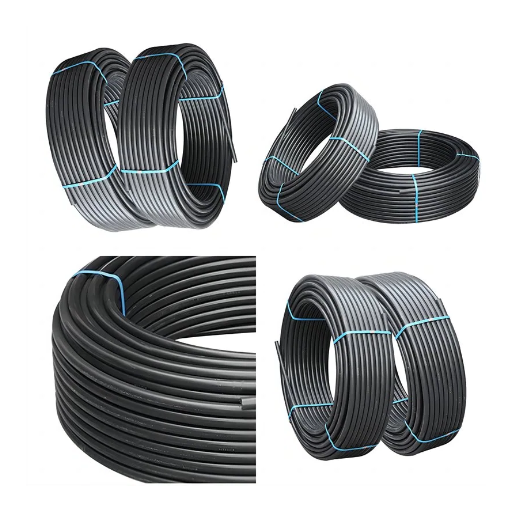
Advanced Molecular Structures in High-Performance HDPE Pipes
New developments in the technology of HDPE pipes concentrate on molecular architecture alterations for optimization of high performance scenarios. Using state-of-the-art polymerization processes, manufacturers are producing superior crystalline HDPE pipes which have increased resistance to thermal, mechanical, and chemical stressor inflicted damage. These molecular changes allow for increased tensile strength and better creep resistance, which profoundly improves the durability of the pipes in strenuous conditions such as industrial fluid transport and gas distribution.
Moreover, the incorporation of specially designed copolymers has improved the flexibility and toughness of HDPE while maintaining rigidity, further driving alterations to HDPE formulations. This equilibrium is very important in regions that are subjected to rapid changes in temperatures and movements, along with vibrations. Recent research suggests that such molecular changes can lead to a reduction of up to 40% in the chances of stress cracking while decreasing the environmental stress rupture rate of the material.
Along with that, the use of nanoscale cross-linking techniques has increased the performance of enduring aggressive chemicals with low permeability while retaining HDPE’s structural integrity. These advances not only improve the performance of HDPE pipes, but also meet the requirements of material degradation, reliability, and environmental impact, decreasing the ecological footprint of these infrastructure systems.
Smart HDPE Pipe Systems with Monitoring Capabilities
The adoption of smart technologies to HDPE pipe systems has modernized infrastructure with intelligent monitoring, maintenance, and optimization technologies. The incorporation of IoT sensors and sophisticated data analysis techniques makes it possible to monitor important aspects of the pipeline network like pressure, flow rate, temperature, and even leakage in real time. For example, internal sensors can monitor stress and deformation, which might indicate failure or some worrying load-bearing issues.
Advanced Central Control Systems can take advantage of the data provided by the smart HDPE pipe systems for formulating predictive maintenance strategies. Unlike before, where operators had to depend on periodic inspections and maintenance, operators can take action based on real-time data to address emerging problems, which reduces the system downtime and maintenance expenses.
Moreover, these advanced technologies assist in achieving sustainability targets by enhancing resource allocation. For instance, immediate action on leaks reduces waste and promotes conservation, sulfate and water removal as a process of separation that aims to prevent water loss. Real Time. With cutting-edge monitoring systems, strong HDPE materials combine harshness with adaptability to the ever-changing future challenges infrastructure development will face, such as the demand for intelligent, durable, and agile infrastructure.
References
Frequently Asked Questions (FAQs)
Q: What are the various types of HDPE pipe fittings available in the market?
A: HDPE pipe fittings come in various types designed for different applications. The common types include butt fusion fittings, electrofusion fittings, mechanical fittings, and compression fittings. Each type serves specific purposes in plastic pipe systems. HDPE 80 and HDPE 100 classifications indicate the material strength, with HDPE 100 pipes offering higher pressure ratings. Specialty fittings like saddles, reducers, and stub ends are also available from HDPE pipe suppliers to accommodate different connection requirements in water, gas, and industrial systems.
Q: What are the benefits of HDPE pipe compared to traditional pipes?
A: The benefits of HDPE pipe are numerous compared to traditional pipes. HDPE pipes are highly durable, with a lifespan of 50-100 years, outlasting aging concrete or steel pipes. They’re corrosion-resistant, chemically inert, and can withstand harsh environmental conditions. HDPE’s flexibility reduces the need for fittings and allows for trenchless installation methods. The material is environmentally friendly, recyclable, and provides excellent flow characteristics due to its smooth interior. HDPE pipes are also cost-effective in the long run despite higher initial costs than some alternatives like PVC.
Q: What are the main uses of HDPE pipes in industrial applications?
A: Uses of HDPE pipes in industrial settings are extensive due to their durability and chemical resistance. They’re widely used for slurry transport in mining operations, chemical processing lines, cooling water systems, and wastewater management. HDPE pipes are also prominent in natural gas distribution networks, oil field applications, and marine environments. Their high-impact resistance and flexibility make them suitable for high-pressure pipelines in demanding industrial environments. Many facilities choose HDPE pipes when replacing metal systems due to their resistance to corrosion, scaling, and bacterial growth, which reduces maintenance costs significantly.
Q: How does PE piping differ from other thermoplastic options like PVC?
A: PE (polyethylene) piping differs from PVC in several significant ways. While both are thermoplastic materials, PE offers greater flexibility, impact resistance, and temperature range tolerance than PVC. PE can withstand freezing conditions without becoming brittle, while PVC may crack. For pressure pipe applications, HDPE (High-Density PE) provides superior strength and durability compared to PVC, especially in demanding environments. PVC typically costs less initially but has a shorter lifespan. Additionally, PE has better environmental credentials, with lower toxicity in production and higher recyclability. The choice between them depends on specific project requirements, with PE generally preferred for underground, high-pressure, or extreme temperature applications.
Q: What is the future of HDPE piping systems in sustainable infrastructure?
A: The future of HDPE piping systems in sustainable infrastructure looks exceptionally promising. As global focus shifts toward environmentally responsible construction, HDPE’s recyclability, low carbon footprint, and exceptional longevity position it as a key material. Emerging trends include smart HDPE pipes with embedded sensors for real-time monitoring, enhanced manufacturing techniques reducing material usage while maintaining strength, and specialized formulations for renewable energy applications. HDPE’s role in water conservation through leak-free networks will become increasingly vital as water scarcity concerns grow. Additionally, the material’s resistance to earthquake damage makes it ideal for resilient infrastructure in seismically active regions. As cities rebuild aging infrastructure, HDPE will likely become the standard material for sustainable, long-lasting piping systems.
Q: How do I choose HDPE pipes for extreme temperature environments?
A: To choose HDPE pipes for extreme temperature environments, you must consider several critical factors. HDPE performs well from approximately -40°F to 140°F (-40°C to 60°C), but specific grades are available for temperature extremes. For cold environments, select pipes with higher PE grades (PE100) that maintain flexibility and impact resistance at low temperatures. For hot applications, verify the pressure derating factors, as HDPE’s pressure rating decreases as temperature increases. Consider specialized formulations like PE-RT (Raised Temperature) for consistently hot environments. Expansion/contraction allowances are crucial in installations with temperature fluctuations—HDPE expands/contracts at a rate of approximately 1 inch per 100 feet per 10°F temperature change.
Q: What are the main considerations when using HDPE pipes for slurry transport?
A: When using HDPE pipes for slurry transport, several critical considerations ensure optimal performance. First, evaluate the slurry’s abrasiveness and chemical composition, as highly abrasive materials require thicker-walled pipes (lower SDR ratings). HDPE’s smooth interior surface provides excellent flow characteristics, reducing energy consumption for pumping. For particularly abrasive slurries, consider HDPE pipes with added wear-resistant liners. Properly size the system based on slurry density, solid content percentage, and required flow rates. Installation should account for potential settling of solids during flow interruptions, often requiring specific slope designs or cleanout access points. HDPE’s flexibility accommodates ground movement, making it ideal for mining applications. Finally, establish a regular inspection program to monitor wear patterns, especially at bends and transitions where erosion typically accelerates.



